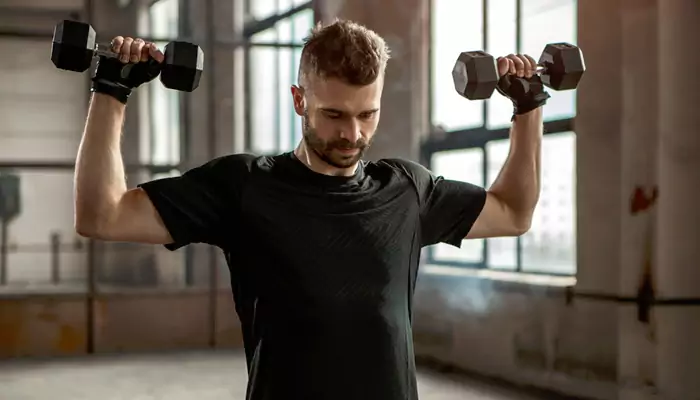
Each have its advantages
Choosing between free weights and machines for workouts depends on your fitness goals, experience level, and personal preferences. Here's a breakdown of their key benefits and drawbacks to help you decide.
Free Weight Exercises
Free weights include dumbbells, barbells, and kettlebells, and they require you to control the movement entirely. This aspect of free weights engages more muscles, including stabilizers, and often provides a more natural range of motion. Despite the initial intimidation, free weights are used by many people of different ages and fitness levels without judgment.
Functional strength
Free weights engage both target and stabilizer muscles, improving balance and coordination for daily activities. For example, a barbell squat activates core muscles to maintain control.
Range of motion
Free weights allow a broader range of motion, promoting better muscle activation and flexibility. A dumbbell chest press, for instance, engages the pectoral muscles through a wider movement than a machine.
Muscle activation
Research shows that free weights elicit greater muscle activation compared to machines. A barbell bench press activates more muscles than a Smith machine bench press.
Balance and coordination
Exercises like lunges with dumbbells enhance balance and coordination, improving overall motor skills and proprioception.
Versatility
A set of dumbbells or a barbell can be used for numerous exercises, making them cost-effective and space-efficient for home workouts.
Drawbacks
Using free weights requires attention to safety. Without proper form and guidance, there's a higher risk of injury, especially when lifting heavier weights. Beginners may find it challenging to master correct techniques, requiring time and patience. As strength increases, adding more weight safely can also be difficult without a spotter to ensure proper form. It's crucial to learn proper techniques and exercise caution to avoid potential injuries during free weight workouts.
Exercise Machines
Machines in the gym, like the chest press, lat pulldown, and leg press, are designed to guide users through specific movements. These machines often come with detailed instructions and provide a controlled environment, making them ideal for beginners. They help target main muscle groups and are important for building strength, maintaining bone health, and supporting daily functions as we age.
Ease of use
Machines come with instructions and guides, making them user-friendly for all fitness levels.
Isolation of muscles
Machines effectively target specific muscle groups, ideal for rehabilitation or focused training. For example, a leg extension machine isolates the quadriceps.

Safety
Guided movements and fixed paths reduce injury risks, particularly for beginners or those with limited experience. When it comes to exercise, machines have their downsides. They limit natural movements, which can restrict your flexibility and overall functional strength. Plus, they might not engage all the small stabilizer muscles well, possibly leading to muscle imbalances. Also, good-quality machines tend to be expensive and take up a lot of space, which might not work well if you're setting up a gym at home with limited room.
If you're new to strength training and prefer a straightforward approach, exercise machines is a good place to start. They're good for targeting specific muscles or if you're recovering from an injury. Plus, machines reduce the risk of injury, especially when used in a gym with various options for a well-rounded workout routine.
If prioritize building functional strength and enjoy exercises that engage multiple muscle groups effectively, go for free weights. They're also perfect if you're comfortable with your form or have someone to guide you. Free weights are versatile and cost-effective for home workouts, catering to different fitness goals and personal preferences.












